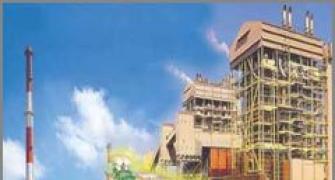Millions of "input" tax credits are taken every day by manufactures and traders under the Cenvat Credit Rules for the purpose of paying and adjusting duty. Now, the very concept of input is in serious jeopardy after the issue of its definition was referred by a Supreme Court Bench of two judges (in the R S Chini Mills vs CCE Meerut case*) to a larger Bench for reconsideration of the previous judgment in the case of Maruti Suzuki versus CCE**.
Now, the very concept of input is in serious jeopardy after the issue of its definition was referred by a Supreme Court Bench of two judges (in the R S Chini Mills vs CCE Meerut case*) to a larger Bench for reconsideration of the previous judgment in the case of Maruti Suzuki versus CCE**.
Since the final decision is likely to take a long time, the next Budget should immediately amend the definition of input to make it doubt-free.
This will also be the best opportunity to make it GST-friendly. Input is a current subject and such uncertainty will lead to a provisional assessment and upset the smooth working of the government, the manufacturing industry and trade.
The issue that went to the Supreme Court in the case of R S Chini Mills was whether machine parts or accessories (welding electrodes in this case) meant for repair and maintenance of machines that are directly used for manufacture are admissible for input credit or not.
This is already a highly litigated issue because of the Central Board of Excise and Customs' insistence on a strict definition, against all logic. The Rajasthan High Court gave a beneficial judgment holding that input credit for welding electrodes is definitely admissible.
The Customs, Excise and Service Tax Appellate Tribunal (CESTAT) in a recent decision in the case of Aditya Cement versus CCE, Jaipur correctly held that the Rajasthan High Court's judgment is to be relied upon because it is the only high court judgment available.
Many CESTAT judgments have also endorsed this view. Even so, the issue went to the Supreme Court. The Supreme Court went into the definition of input and finally referred the matter to the larger Bench.
And now it has become all the more uncertain whether products necessary for maintenance and repair of machine should be admissible for input credit or not. The definition itself is in deep waters.
The second problem is the multiplicity of expressions used for similar things in the definition of input and capital goods.
For "all goods" the condition is that they should be "used in or in relation to manufacture of final product whether directly or indirectly and whether contained in the final product or not".
However for two of the six "included" items, namely electricity and steam, the condition is "used in or in relation to manufacture of final products or for any other purpose".
Moreover, in the definition of capital goods, the required condition is "used", while for the definition of inputs the requirement is "manufacture".
There is no reasonable justification for such a distinction. This sort of fine differentiation in the drafting of the definitions of input and capital goods has led the courts and even the Supreme Court to give judgments that are now up for reconsideration before a larger Bench.
There have been 583 cases in four years on various issues of input credit by the Tribunal, high courts and the Supreme Court.
The third issue is that the definition of capital goods covers a concept of "used for providing output service".
This definition also applies to inputs, but in this case it has been put under a different sub-heading. There is no justification for making two entries.
The fourth issue is that there is no reason why capital goods and inputs should be separately defined. Capital goods are also inputs.
Both are admissible for input credit. If the distinction between the two is abolished, the vast majority of the problems leading to litigation will vanish.
The excuse given by the revenue department is that for staggering the input credit of capital goods it is necessary to define capital goods separately.
This is nothing but an excuse. Definition is a permanent concept. For staggering the credit (which is no longer necessary), a separate temporary definition can be given.
I suggest in Budget 2011 the following definition of input (including capital goods) be incorporated:
Input means all goods
(1) except light diesel oil, high-speed diesel oil, motor spirit, and any goods used in the office;
(2) including lubricating oils, greases, cutting oils, coolants, accessories of the final products cleared along with the final product, goods used as paint, or as packing material, or as fuel, or for generation of electricity or steam, motor vehicles as now appearing in Rule 2(B) of the 2004 Rules.
(This inclusive part will not be necessary when the Goods and Services Tax is introduced but it is necessary now because revenue officers are likely to misunderstand the meaning of its abolition.)
(3) on the conditions that:
(a) they are used in or in relation to manufacture of final products whether directly or indirectly; or
(b) whether they are contained in the final product or not; and
(c) used within the factory of production; and
(d) used for providing any output service; or
(e) used for repair or maintenance (this is very important).
This definition will be GST-friendly because the GST will have to be an amalgamation of a comprehensive goods tax and comprehensive services tax.
The GST cannot work with all sorts of complicated definitions, as there are now. So it is better to have a definition that will tally with the comprehensive service tax.
Second, the definition of key concepts like input and output must be clear-cut, indicating the exceptions and the conditions.
Finally, the present concept of input and capital goods must be combined to make a comprehensive concept of input that will be friendly to the concept of GST.
*2010 (260) ELT321(SC)
** (Delhi-III -2009 (240) ELT641(SC)
The writer is former member, Central Board of Excise and Customs






